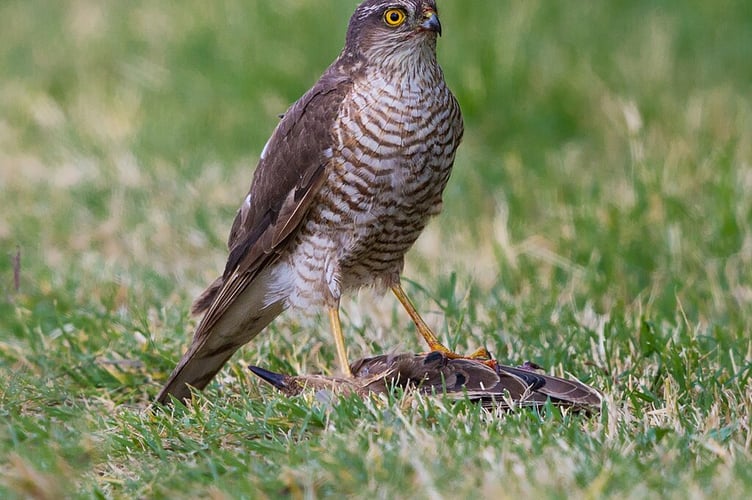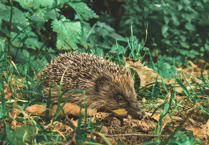Most responsible cat owners take precautions when feeding wild birds in their gardens to reduce the likelihood of their pet catching and killing the birds, and these articles often give tips about how to do this.
But at this time of year small birds need to be particularly wary of another predator in our gardens – the sparrowhawk, a bird of prey that is more commonly seen in urban gardens than any other.
It can be identified by its bright yellow eyes and yellow legs with long talons, and (as with all birds of prey) the females are much larger than the males.
March and April are the months when food supplies are at their lowest, and adult sparrowhawk mortality is at its highest – about a third of adults die each year with the most common cause being starvation.
Juveniles fair even worse, with less than a 40 per cent chance of survival (male birds, in particular, die young because their size means they can only catch smaller garden birds; whereas the females can catch larger birds, like pigeons, and can go for longer in between meals).
The sparrowhawk’s life expectancy is less than four years, whereas most other species of birds of prey live considerably longer.
When spotting a sparrowhawk predating smaller birds our first impulse may be to protect the ‘victim’ by frightening off its attacker, but spare a thought for the hawk.
Some people worry that sparrowhawks eat too many small birds and cause their populations to fall or even become endangered.
Emotions can cloud the fact that the scientific research points to the contrary and long-term scientific studies have shown that sparrowhawks generally have no, or little, impact on garden bird populations.
A study conducted by the British Trust for Ornithology and funded by Songbird Survival looked at the relationship between populations of sparrowhawk and prey species over a period of 33 years.
This study concluded that for the majority of garden bird species (not least sparrows!) there is no evidence that increases in sparrowhawks are associated with their population declines.
It is also clear that for the majority of declining species with unfavourable conservation status, population declines are due to factors other than predation (loss of habitat being a major one).
So, a sparrowhawk stealthily hunting its prey in our back gardens might be difficult for some people to watch, especially if there is a lengthy chase amid the shrubs and bushes before the final kill, but this is the stark reality of nature.
What’s not so easy to accept is garden bird predation by domestic cats who don’t hunt and kill because they’re hungry, but because it’s part of their natural instinct. It’s estimated that 27 million birds are killed every spring and summer by cats.
If this is a major concern for you, but you also like cats, then why not adopt an older cat who has given up hunting and prefers a quiet life, with very little exertion and food on demand? We have George and Rigby in our cattery at the moment who may just fit the bill.
George is a 13-years-young all-black cat, and Rigby is a slightly older black and white boy. Their owner passed away recently and there was no-one in the family who could take them, even though they are good with older children, dogs and other cats.
They are looking for a quiet life where they can be a much-loved part of a family once again.
If you would like to meet them please contact the cattery team on [email protected] (or 851672, option two) who can make suitable arrangements (public viewing is restricted at the moment while our main cattery pens are being replaced).





Comments
This article has no comments yet. Be the first to leave a comment.